You can make elderflower syrup without citric acid, simply using lemons. You’ll only need elderflowers, sugar, water, and freshly squeezed lemon juice. The syrup is perfect to dilute with water for a summerly, non-alcoholic beverage, or in cocktails like Hugo.
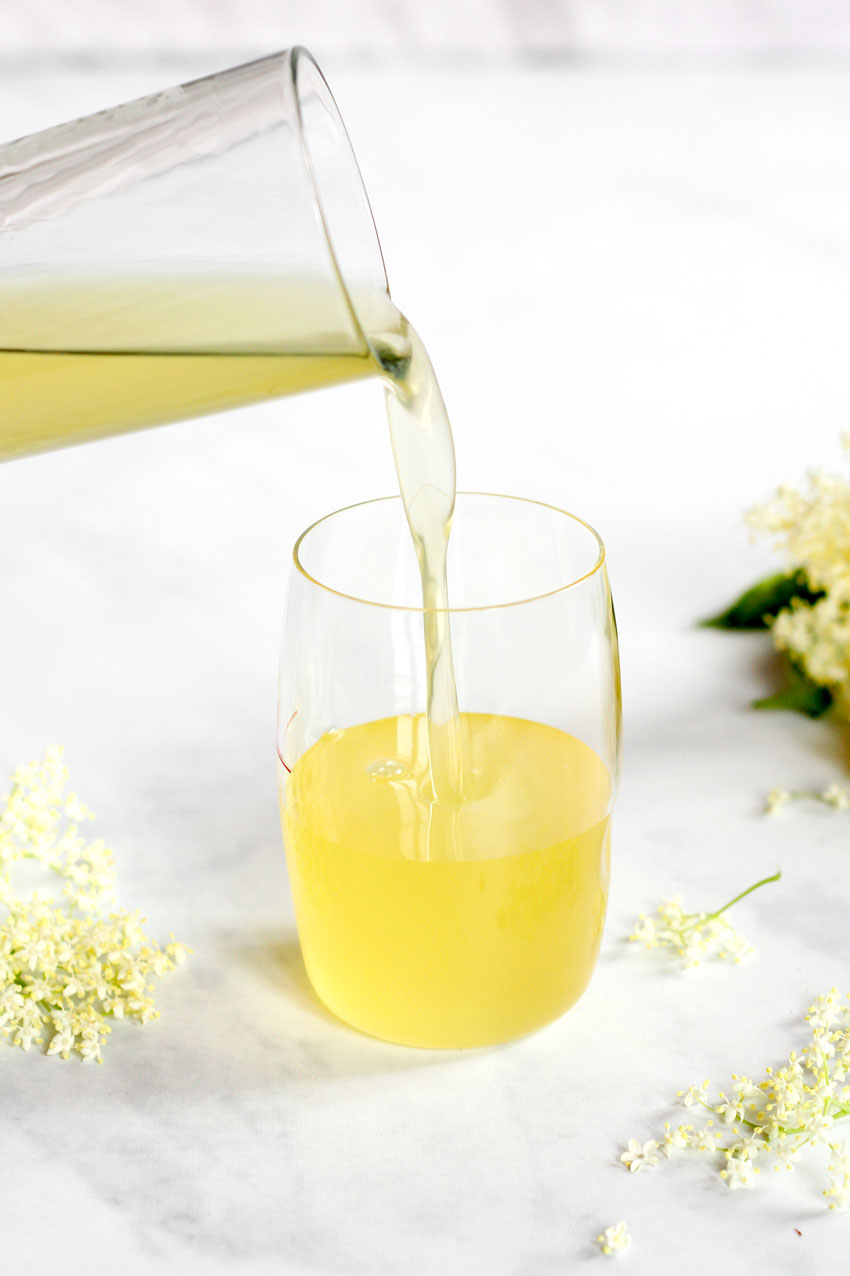
I grew up with homemade elderflower cordial in the house. As kids, we barely got to drink soda but instead we would pour a tablespoon of elderflower syrup in a glass and fill it with water, which is way healthier, compared to soft drinks.
I have posted a recipe for elderflower syrup, also called elderflower cordial, a while ago on the blog. Back then, I used citric acid in the recipe. It is still my go-to recipe after many years.
This year, I tried something new and replaced the citric acid with freshly squeezed lemon juice and some lemon zest to get a more ‘natural’ elderflower cordial.
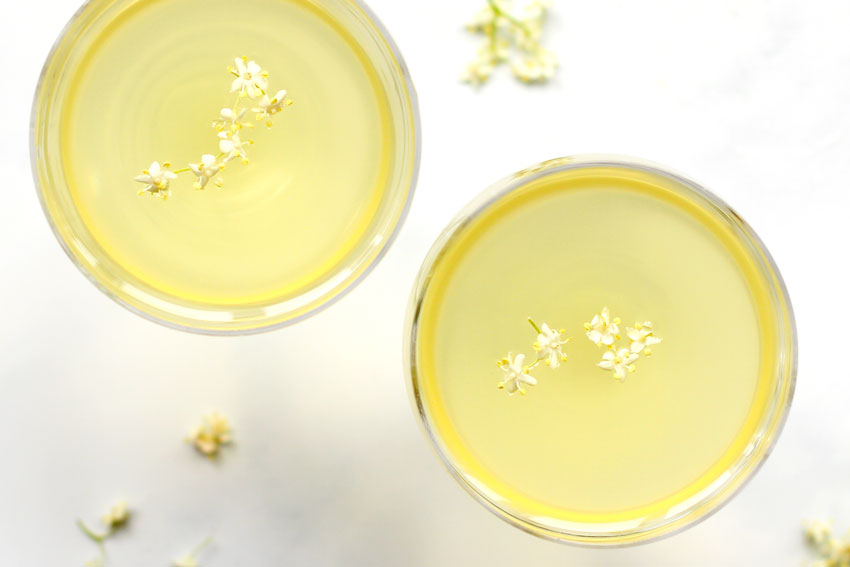
How to use elderflowers and elderberries?
Different parts of the elder bush have long been used in herbal medicine and in cooking. The flowers, which bloom in late May and June, are used to make elderflower syrup, tea, elderflower fritters, jelly, sorbet, and much more. Even Kaiserschmarrn (shredded pancakes).
If the elderflowers are left on the bush and are not picked, they will turn into dark purple berries around August/September and taste delicious when cooked into jams and jellies, or a traditional Austrian dish called ‘Röster’, which is sweet stew of elderberries.
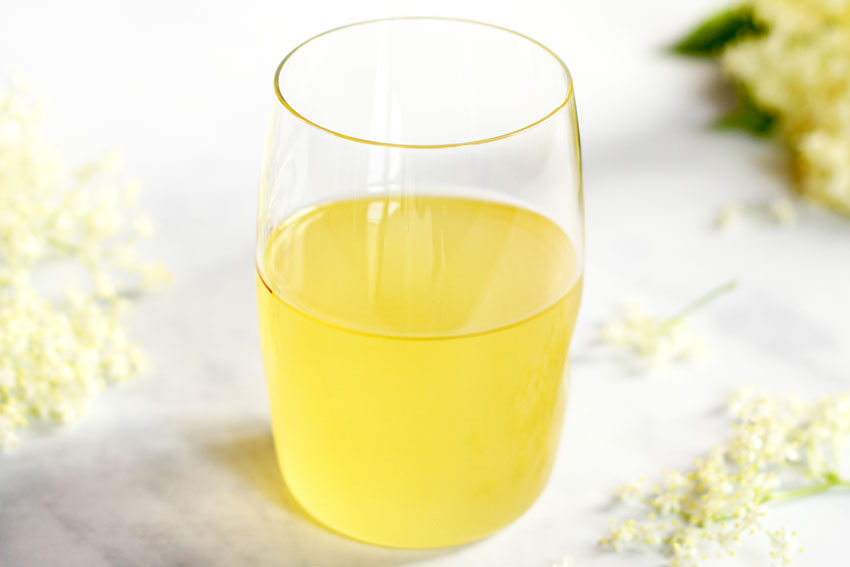
Where to find elderflowers?
Harvesting elderflowers is a late spring tradition in many parts of the world, especially the Northern Hemisphere. Elders can tolerate wind, frost, sun, and shade.
They grow wild in fertile soil, often along roadsides, at the edge of woods, and in parks. Basically anywhere. Elderflowers are at their peak in late spring and early summer (June).
What do elderflowers look like?
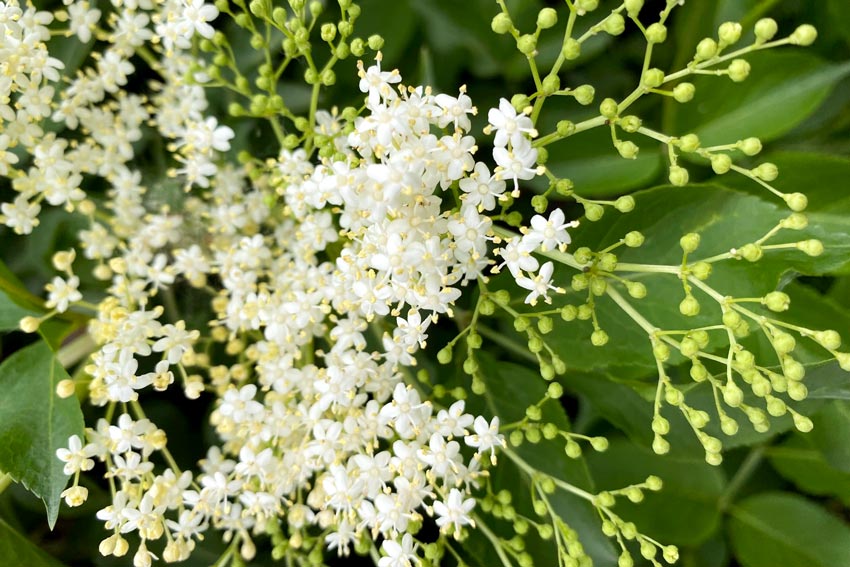
Elder is a very common bush (sometimes it even looks like a tree) that grows up to seven meters tall. In May and June it blooms with tiny, creamy white flowers clustered in round umbels, also called heads, which are 10-25 cm (4-10 inch) in diameter.
Each of the tiny flowers will later produce a shiny, deep purple colored elderberry. Often times, you will smell an elderflower bush before you can even spot it. The blossoms have an intense, floral scent.
But be careful: The elderflower plants’ blooms resemble several toxic plants like hogweed and hemlock. So make sure that you are actually picking elderflowers.
You can easily recognize them by their scent. If not sure, I suggest rather leaving them and checking back in August if the plant develops purple berries, a reliable sign that it is an elderberry bush. Then you can return next spring and harvest the blooms.
How to harvest elderflowers?
Pick elderflowers on a sunny day, around late morning or noon. Avoid picking them from roadsides and polluted areas. To get the most out of the blooms, wait to pick them until all of the buds have opened but have not withered and turned brown.
Elder is frequently attacked by lice, so it’s a good idea to check before picking. They are easy to spot because of their dark grey/black color. Sometimes the lice are really only sitting on the stems of one or two umbles so make sure to avoid harvesting these flower heads.
I prefer to clip off the whole flower umble using scissors since the stems are sometimes a bit tough to break off. Gently place them in an airy container like a basket, bowl, mesh bag, or a spacious tote bag and use them on the same day.
How to prepare elderflowers for syrup?
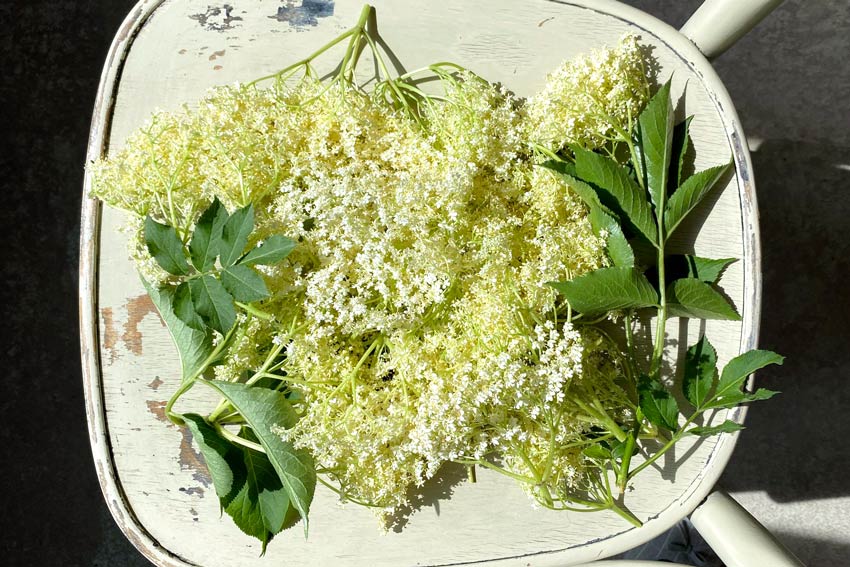
Once at home, I spread the elderflower heads on a table, preferably outside in the shade. This gives bugs a chance to escape.
Do not wash elderflowers before using them, or you’ll lose a lot of flavor. Also, try not to shake them vigorously, for example to remove bugs. This will remove pollen, which gives the syrup a delicious taste and a yellow-ish color.
Recipe elderflower syrup without citric acid
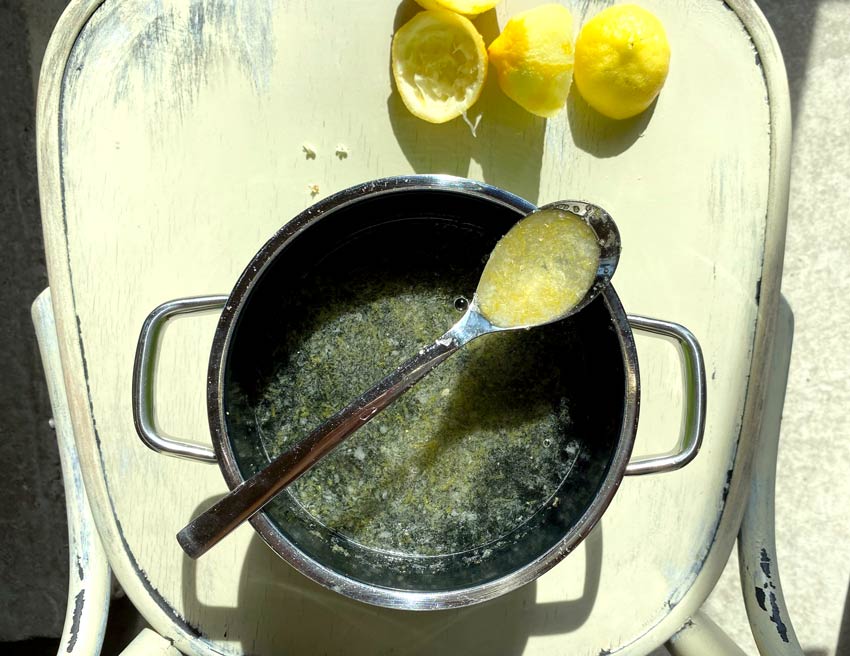
Combine sugar and water in a large saucepan. Wash 2 organic lemons with hot water, thoroughly pat them dry, and then zest them directly over the saucepan using a microplane or cheese grater.
Juice all 5 lemons to get 200 ml (3/4 cups + 2 Tbsp) of lemon juice. Add it to the saucepan. Heat the water-sugar-lemon mixture while stirring until the sugar has dissolved (no need to boil). Remove from heat and allow the syrup to cool to room temperature.
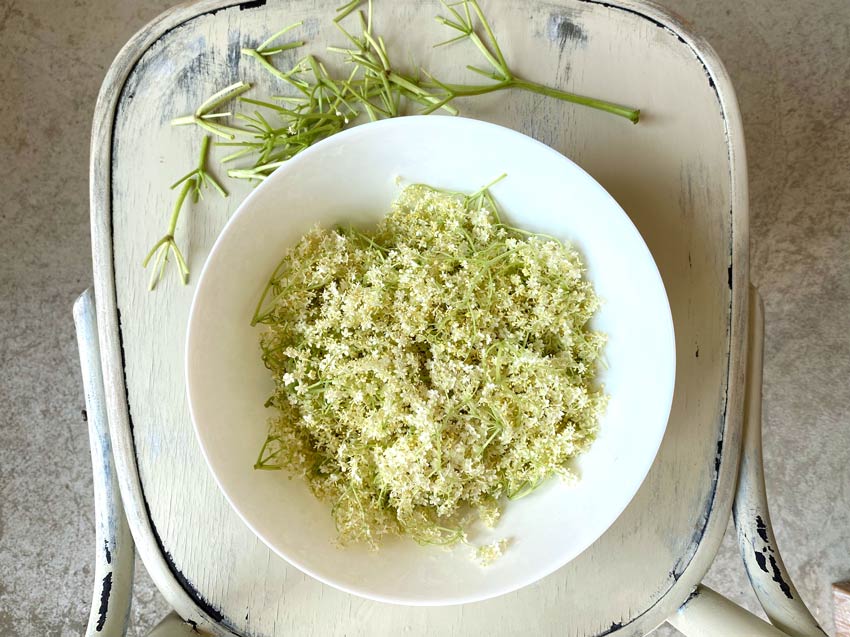
Remove any insects or debris from the elderflower blossoms. Do not wash them, or shake too vigorously to avoid losing flavor. Trim the thick stems away from the elderflower heads and discard. Add the blossoms to a large glass jar or a big bowl.
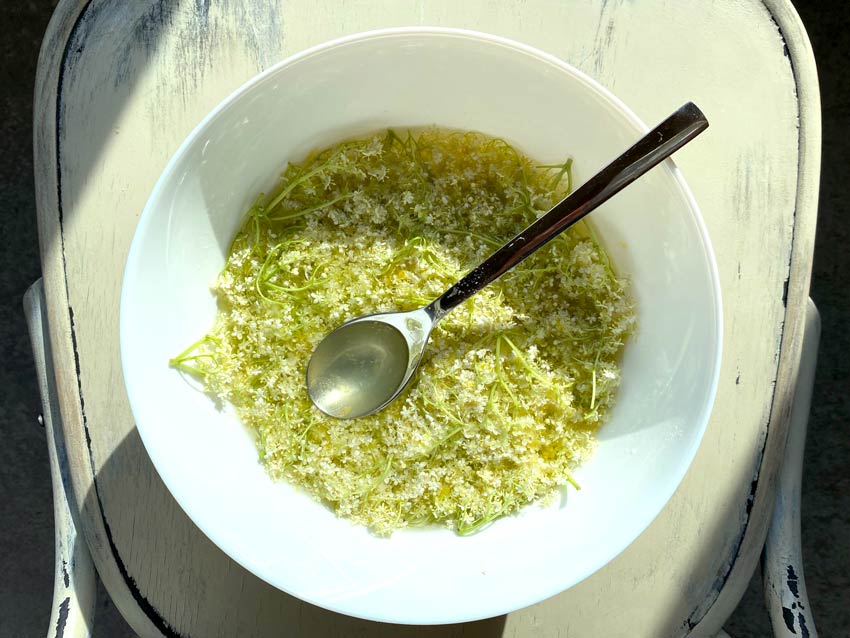
Pour the cool syrup over the elderflowers. Push the elderflowers into the syrup with a spoon and make sure that the blossoms are immersed in the syrup.
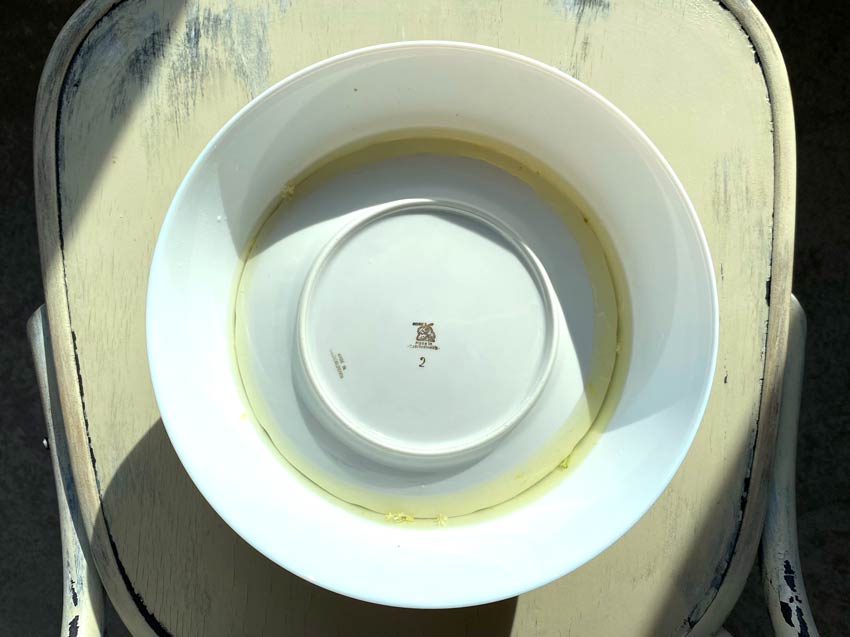
Putting a small plate on top can help weighing the flowers down. Cover the jar/bowl with a lid or a tea towel to keep insects out and let the syrup steep at cool temperature (a cool room/cellar or the fridge) for 1-2 days (everything between 15 hours and 48 hours is fine), stirring the syrup once halfway through.
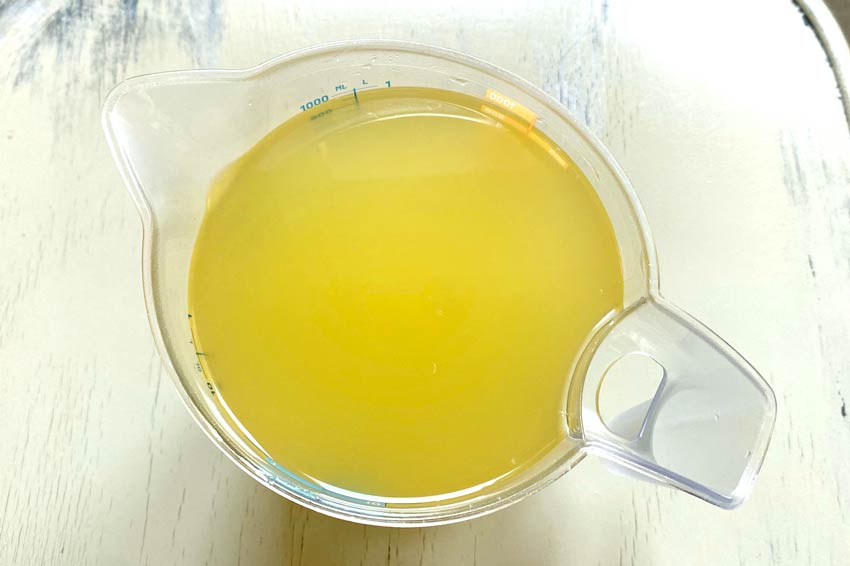
Strain the syrup through a colander, squeezing the syrup out of the blossoms with your hands. Then, strain the syrup for a second time, this time through a colander or sieve lined with a cheesecloth to filter.
Heat the syrup in a large saucepan and let it cook on low heat for 3 minutes. Careful, it might bubble and foam vigorously. Remove the saucepan from the heat and in case there is still foam, stir for a bit to get rid of the foam.
Pour the syrup into several sterilized, small glass bottles with screw tops or jars and tightly close them.
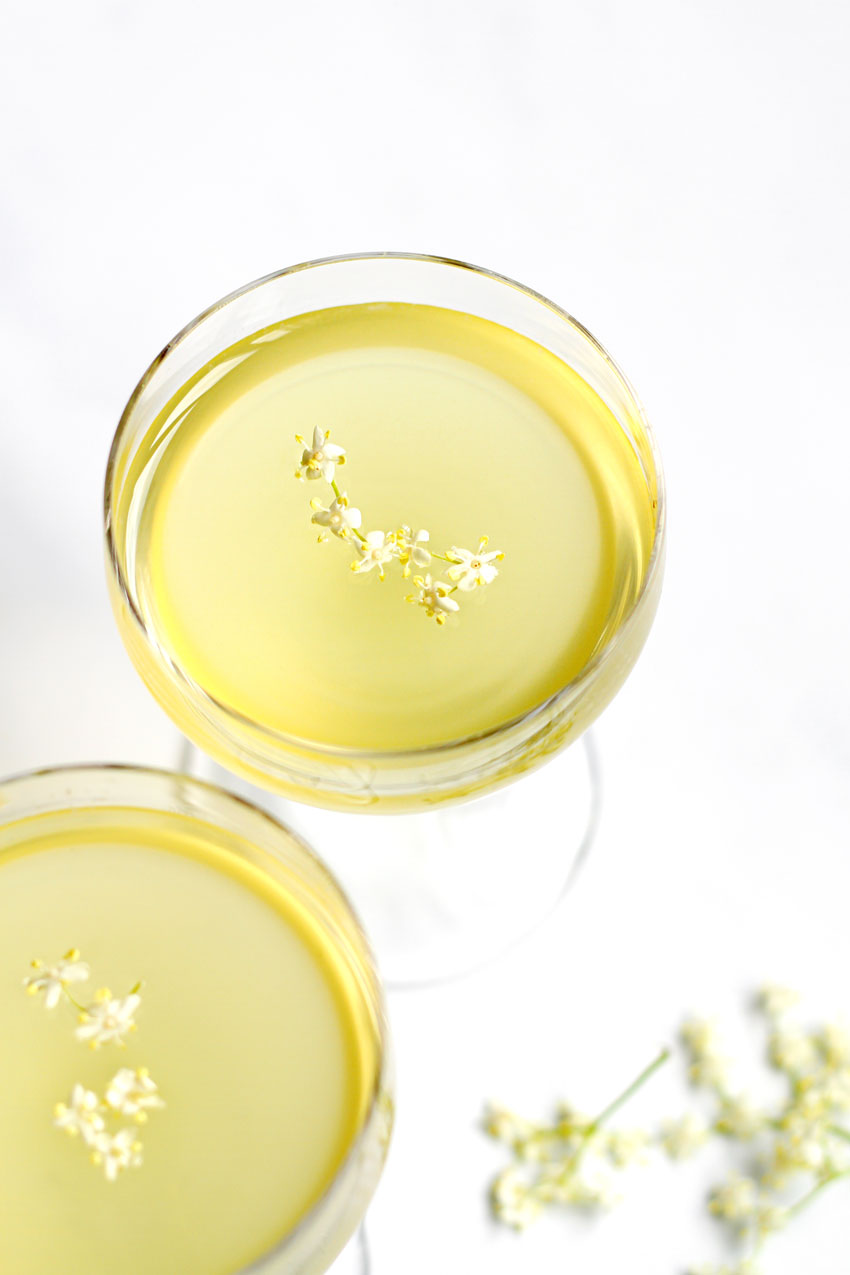
This syrup will usually keep for 1 year, stored in a dark, cool place (cellar/fridge). Once opened, store the bottle in the fridge. Mix with water at a 1:10 ratio. Enjoy!
Useful tips for making elderflower syrup:
- Harvest elderflower umbles with open flowers – no closed buds, no withered flowers – and without lice. Do not wash or shake excessively, which removes flavor.
- Keep elderflowers covered in liquid while soaking or they will turn brown. It happened to me before, it’s ok if some are brown, but the taste will be better when they stay fresh and white.
- Use organic lemons to make the syrup since you’ll also need the zest.
- Use a large pot. The syrup will bubble up and double or even triple in volume when heated. I learned that the hard way…
- ‘Mise en place’ – have everything ready: clean glass bottles or jars, including an extra jar for potential leftovers, and a small plate in the freezer for the jelly wrinkle test.
How to use elderflower cordial?
- Drink the cordial with either still or sparkling water at a 1:10 ratio.
- Sweeten whipped cream and cake fillings/creams with the syrup.
- Use it in place of simple syrup for cocktails like Hugo.
- Drizzle it over pancakes, Kaiserschmarrn (shredded pancakes), a Dutch baby, pavlova, and ice cream.
- Use it to sweeten frozen yogurt, smoothies, and ice cream.
- Add it to pie-fillings (elderflower pairs perfectly with berries) and fruit compote.
What is citric acid?
Citric acid is found naturally in citrus fruits, but it can also be manufactured. It looks similar to salt, that’s why it is also often called sour salt.
Citric acid is one of the most common food preservatives and flavoring additives. It is also used to add a sour taste to foods and soft drinks. You’ve probably seen it listed on ingredient labels of a soda cans, snack foods, or candies. Within the European Union it is denoted by E number E330.
Citric acid helps the cordial to preserve for a long time. My other elderflower syrup recipe that uses citric acid keeps for at least a year even if not cooked. Since citric acid is concentrated, you’ll need quite a lot of lemon juice to replace it.
By the way: I love everything with elderflowers. The very first post on this blog was a delicious Elderflower Kaiserschmarrn :) and the beer-battered elderflower fritters shortly followed.
If you want to try my classic elderflower syrup (with citric acid), you can find the recipe here.
Elderflower Syrup without Citric Acid
Ingredients
- 750 g (about 3 ½ cups) granulated sugar
- 400 ml (1 2/3 cups) water
- 200 ml (3/4 cups + 2 Tbsp) lemon juice, freshly squeezed from about 5 lemons – at least 2 of them organic
- 15-20 big elderflower heads umbles
Instructions
- Combine sugar and water in a large saucepan. Wash 2 organic lemons with hot water, thoroughly pat them dry, and then zest them directly over the saucepan using a microplane or cheese grater.
- Juice all 5 lemons to get 200 ml (3/4 cups + 2 Tbsp) of lemon juice. Add it to the saucepan.
- Heat the water-sugar-lemon mixture while stirring until the sugar has dissolved (no need to boil). Remove from heat and allow the syrup to cool to room temperature.
- Remove any insects or debris from the elderflower blossoms. Do not wash them, or shake too vigorously to avoid losing flavor.
- Trim the thick stems away from the elderflower heads and discard. Add the blossoms to a large glass jar or a big bowl.
- Pour the cool syrup over the elderflowers. Push the elderflowers into the syrup with a spoon and make sure that the blossoms are immersed in the syrup. Putting a small plate on top can help weighing them down. Cover the jar/bowl with a lid or a tea towel to keep insects out and let the syrup steep at cool temperature (a cool room/cellar or the fridge) for 1-2 days (everything between 15 hours and 48 hours is fine), stirring the syrup once halfway through.
- Strain the syrup through a colander, squeezing the syrup out of the blossoms with your hands. Then, strain the syrup for a second time, this time through a colander or sieve lined with a cheesecloth to filter.
- Heat the syrup in a large saucepan and let it cook on low heat for 3 minutes. Careful, it might bubble and foam vigorously. Remove the saucepan from the heat and in case there is still foam, stir for a bit to get rid of the foam.
- Pour the syrup into several sterilized, small glass bottles with screw tops or jars and tightly close them.
- This syrup will usually keep for 1 year, stored in a dark, cool place (cellar/fridge). Once opened, store the bottle in the fridge. Mix with water at a 1:10 ratio. Enjoy!
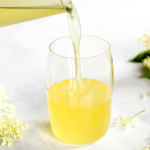
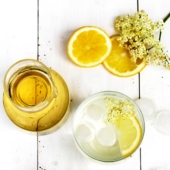
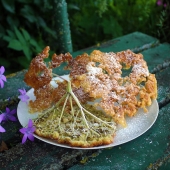
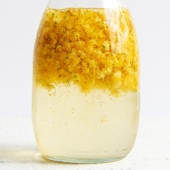
Family love it. I‘ll use it for pancakes and waffles in place of maple syrup.
It tasted divine! We all love it.
Hi Melanie,
Happy to hear that. This is my favorite syrup :)
Ursula
I do not have citric acid at home so I made the elderflower cordial using your recipe. Oh my …. This goes on everything now – pancakes, waffles,…
Thank you for the recipe. My daughters love it :-)
Hi Dora,
You are welcome! So happy that your daughters enjoy it. I hope you do too :) Ursula
Hi Vienna Team,
I also grew up with Elderberry Sirup and later, made it for my kids, and even later, I used it for one of the best Summer drinks I know.
Unfortunately, no Elderberries in Alberta, Canada!
I am always looking forward to your Austrian Recipes!!!
Thanks,
Dorothea
Hi Dorothea,
Happy to hear that you are also a fan of elderflower syrup and made it for your kids. Too bad that there are no elderberries in Alberta. I was always on the lookout for them, we we lived in the Boston area (found exactly one). And, happy to hear that you enjoy the Austrian recipes :) Thanks so much for your comment and I hope you are having a nice summer! Ursula
Longest story I read on a drink. Feel like I should have started drinking and then go for the reading part, I would probably been drunk by now. Nice blog
Hi Ole,
Well, a drink while reading actually can be nice lol. Hope that you’ll try the recipe some day,
Ursula